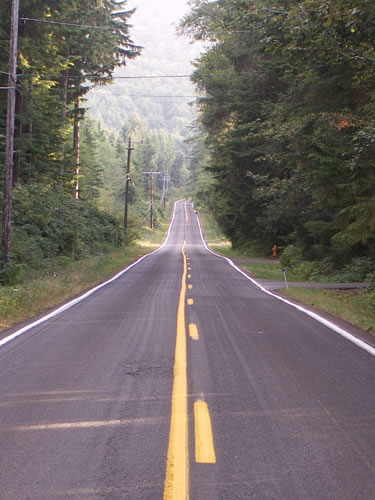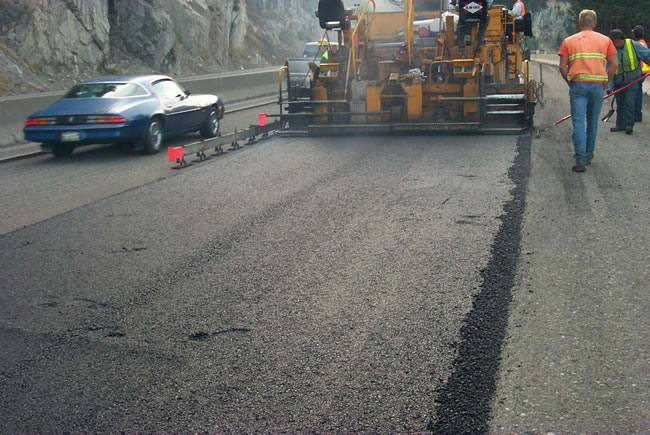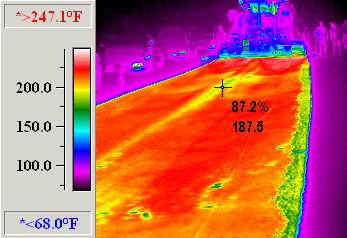Description
Mat tearing, or streaks in the mat, can be caused by different phenomena:
- Parts of the mat surface are dragged along by the screed. Under normal operation, the screed passes cleanly over the mat, however, if the screed is applying excess downward force or the mat is too thin for the given nominal maximum aggregate size, it can begin to drag aggregate particles along the surface of the mat leave in longitudinal streaks behind where the dragging occurred.
- Inadequate mix delivered behind the gearbox. This type of streak is usually 150 – 200 mm (6 – 8 inches) wide and runs longitudinally down the middle of the mat.
- Other streaks. Other streaks can occur for a variety of reasons such as screed wear, screed crown, screed extensions, segregation and temperature differentials.
Problem
Torn mat areas are unsightly and can reduce long-term pavement performance. Mat tearing usually results in a corresponding decrease in density relative to the mat as a whole. Therefore, torn or streaked areas may have higher air voids and are susceptible to decreased stiffness, reduced fatigue life, accelerated aging/decreased durability, rutting, raveling, and moisture damage (Hughes, 1984[1]; Hughes, 1989[2]).
Possible Causes
Causes depend upon the type of mat tearing or streaking:
- Parts of the mat surface are dragged along by the screed. Warped or worn screed plates will increase the likelihood of dragging aggregate particles along the mat surface because they generate more friction (warped screed plates) and have more potential defects that can grab aggregate particles (worn screed plates). Excessive paver speed can magnify small aggregate particle disturbances to the point where the result becomes a visible streak. An excessively thin mat in relation to nominal maximum aggregate size may result in the paver screed being supported by the larger aggregate particles. Aggregate particles caught between the screed and the surface being paved may roll or be dragged forward.
- Inadequate mix delivered to a particular area in front of the screed. Inadequate material flow to the location behind the auger gear box may be caused by improper flow gate settings, or improperly set, missing, or worn reverse augers located adjacent to the gearbox. Reverse augers are a small portion of each auger located adjacent to the gear box where the augers are pitched the opposite way so as to cause mix to flow inwards (the rest of the auger is pitched to promote outward material flow) and fill in behind the gear box.
- Other streaks. Other forms of mat streaking can be caused by:
- Improper screed crown settings. A wide centerline streak can be caused by a lack of lead crown in the screed. Wide streaks on both outside mat edges can be caused by an excess of lead crown.
- Cold screed plate. Without preheating (usually with screed heaters), a screed plate will tend to tear the mat at the beginning of paving operations. As the hot HMA heats the screed, this type of tearing will generally disappear.
- Improper screed extension use or installation. If screed extensions do not closely match the screed’s crown and elevation they could create a small streak at the point of transition from screed to extension.
Solutions
Solutions depend upon the type of tearing or streaking:
- Parts of the mat surface are dragged along by the screed. Ensure the screed plate is properly maintained and replace worn or defective screed plates. Decrease paver speed. Adhere to nominal maximum aggregate size vs. lift thickness requirements.
- Inadequate mix delivered to a particular area in front of the screed. Install reverse augers or paddles near the gearbox if they are not already installed. If they are installed, check them for wear and proper operation. Some pavers are more prone to this type of problem than others.
- Other streaks. Properly adjust screed crown settings. Typically, the lead crown should be set slightly higher than the tail crown by about 3 mm (0.125 inch). Heat the screed before paving operations. Be careful when using screed extensions. Extensions that just lengthen the strike-off plate are especially prone to causing rough mat streaks. Mix that passes under these kinds of extensions is struck off at the correct elevation but does not pass under the screed plate and therefore does not receive the compactive effort of the screed.
Footnotes (↵ returns to text)
- Hughes, C.S. (October 1984). “Importance of Asphalt Compaction.” Better Roads, Vol. 54, No. 10. pp. 22-24.↵
- Hughes, C.S. (1989). National Cooperative Highway Research Program Synthesis of Highway Practice 152: Compaction of Asphalt Pavement. Transportation Research Board, National Research Council. Washington, D.C.↵



